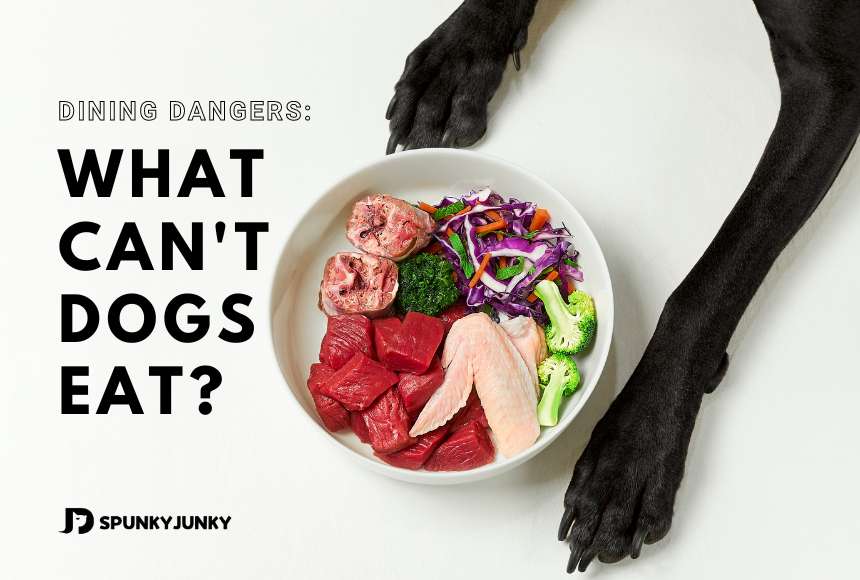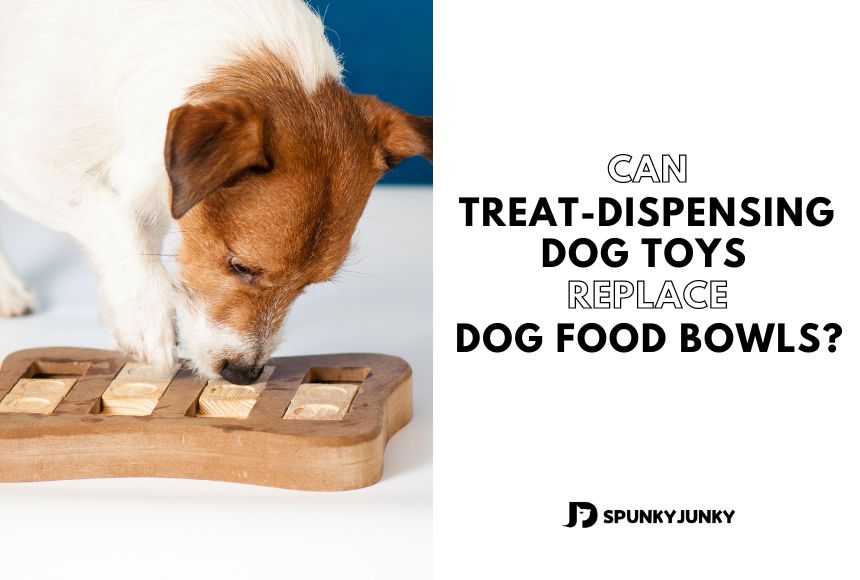Calling all first-time dog owners! Hi, it's me again.
Last time, we talked about what is the first step after getting a pet home. Are you excited to bring a new animal into your home?
I'm sure of it. you don't know what to do next?
Don't worry. I'll tell you in a minute.
In this article, we'll go on a trip to seek out "what food can't dogs eat" and what to do if your dog eats something they shouldn't. By understanding this important guideline, we can ensure our dogs stay safe and healthy and wag their tails or purr with delight.
Are you ready to continue the journey of becoming an intelligent dog owner? Let's go!
Open your list of searches, there must be a record of "Can dogs eat...?" Don't deny it, we dog owners actually often fall into this problem. But before "what can dogs eat", please let me introduce what foods can't dogs eat, never and ever.
Stay hyper-vigilant! Toxic Foods for Dogs
The first part we'll talk about is toxic foods for dogs. You must be vigilant about these things to ensure that you won't find them in your dog's mouth. These foods may be regular treats for you, but for them, they are deadly "delicacies."
 ● Chocolate and caffeine: These contain substances called methylxanthines, which can cause vomiting, diarrhea, rapid breathing, seizures, abnormal heart rhythms, and even death in severe cases.
● Chocolate and caffeine: These contain substances called methylxanthines, which can cause vomiting, diarrhea, rapid breathing, seizures, abnormal heart rhythms, and even death in severe cases. 
 ● Onions, garlic, and chives: These contain compounds that can damage a dog's red blood cells, leading to anemia. Symptoms may include weakness, pale gums, lethargy, and decreased appetite.
● Onions, garlic, and chives: These contain compounds that can damage a dog's red blood cells, leading to anemia. Symptoms may include weakness, pale gums, lethargy, and decreased appetite.  ● Xylitol (artificial sweetener): Xylitol is very dangerous for dogs and can cause insulin to be released quickly, which can cause dangerously low blood sugar. Symptoms include vomiting, loss of coordination, seizures, and liver failure.
● Xylitol (artificial sweetener): Xylitol is very dangerous for dogs and can cause insulin to be released quickly, which can cause dangerously low blood sugar. Symptoms include vomiting, loss of coordination, seizures, and liver failure.  ● Alcohol: Dogs are very sensitive to alcohol; even small amounts can make them drunk. It can cause problems like lack of coordination, confusion, puking, diarrhea, trouble breathing, coma, or even death.
● Alcohol: Dogs are very sensitive to alcohol; even small amounts can make them drunk. It can cause problems like lack of coordination, confusion, puking, diarrhea, trouble breathing, coma, or even death.  ● Avocado: Avocados include a substance called persin that is toxic to dogs when consumed in large amounts. It may cause vomiting, diarrhea, abdominal enlargement, and difficulty breathing.
● Avocado: Avocados include a substance called persin that is toxic to dogs when consumed in large amounts. It may cause vomiting, diarrhea, abdominal enlargement, and difficulty breathing.  ● Macadamia nuts: Macadamia nuts can lead to muscle tremors, weakness, vomiting, body temperature increase, and difficulty walking in dogs. The exact mechanism of toxicity is unknown.
● Macadamia nuts: Macadamia nuts can lead to muscle tremors, weakness, vomiting, body temperature increase, and difficulty walking in dogs. The exact mechanism of toxicity is unknown.
Above listed foods are toxic to dogs due to their specific chemical compositions. Dogs have a different metabolism than humans, and their bodies may struggle to process or eliminate certain compounds. It's essential to be cautious and avoid feeding these foods to dogs to prevent potential health risks and emergencies.

Keep Your Guard up... These are Harmful Foods for Dogs
Besides the "toxic" foods listed above, there are other foods you might ignore that may also be harmful to dogs.
Dogs shouldn't eat these things because their digestive systems aren't made to deal with some of the ingredients or preparations. Humans and dogs have different needs and preferences when it comes to food. When dogs eat these things, it can cause digestive problems, nutrient imbalances, and, in some cases, more serious health problems like pancreatitis or bacterial infections. It's important to give dogs a balanced diet that meets their special nutritional needs and keeps them from getting sick.

Watch Out for Allergens! Common Food Allergies in Dogs
As we talked a lot about toxic and harmful foods that dogs can't eat, there is another group you need to pay attention to. Yep, you read that right. They are allergenic foods. In fact, dogs can get allergic, just like us humans.
When a dog's immune system overreacts to certain proteins or other chemicals in food and treats them as invaders, it has a food allergy. The immune reaction can cause swelling and the release of chemicals called histamines, which can cause a number of symptoms.
_________________________________________________________________________________________________________
ADDITIONAL INFO
As I told you so many foods that dogs can't eat above, you may have the question: "So, what can dogs eat?"
Don't be hasty, I'll list some common foods that dogs can eat here first. I will follow up with a related article as well. Of course, if you are unsure, feel free to leave me a message.
Common fruits that dogs can eat: apples, bananas, oranges...
Common vegetables that dogs can eat: carrot, broccoli, pumpkin...
_________________________________________________________________________________________________________

Hidden Hazards: Protecting Your Dog from Dangerous Substances
In addition to watching your dog's diet, it's essential to know about other things that can hurt him. Here are some popular things that you should not give your dog:
● Medications and Human Supplements:
Many medicines that are okay for people can be hazardous for dogs. Keep medicines out of your dog's reach, and don't give them to him yourself. Common painkillers, antidepressants, and prescription drugs can do a lot of damage, including damage to organs, stomach problems, seizures, and even death. You should talk to your vet about the right amount and type if your dog needs medicine.
● Certain Plants and Flowers:
Plants and flowers make our homes and grounds look nice, but some can hurt dogs if they eat them. Examples include flowers, azaleas, tulips, daffodils, and sago palms. If you eat these plants, you might get sick, have diarrhea, drool, feel tired, or, in the worst cases, your organs might stop working. If you need clarification on whether a plant is safe, look it up or talk to a vet or gardener to ensure your pet is safe.
● Household Chemicals and Cleaners:
Dogs are usually curious so they may get into chemicals and cleaners around the house by accident. They can get sick if a dog eats or breathes in cleaning products, chemicals, detergents, or even some essential oils. Please keep these things locked up in cabinets or on high shelves, and clean up any leftovers to avoid getting into the wrong hands. Use cleaning items that are safe for pets or natural alternatives if you can.
● Tobacco and Nicotine Products:
Dogs can get nicotine poisoning from tobacco and nicotine products like cigarettes, cigars, chewing tobacco, and nicotine gum. When these chemicals are taken in, they can cause symptoms like vomiting, a faster heart rate, tremors, seizures, and even death. Make sure that your dog can't get to these things and that they are thrown away in sealed cases.
By knowing about these secret dangers and taking steps to avoid them, you can keep your dog from getting hurt and make your home a safer place to live.
Precautions and Preventive Measures for Safeguarding Your Pups
So much has been mentioned about the foods and items you need to be aware of; I'm sure you are full of questions and need help figuring out what to do. Don't worry, let me tell you carefully.
● Be aware of harmful foods:
Learn about the things that dogs shouldn't eat. Common examples include chocolate, grapes, onions, xylitol, and booze. Knowing the possible risks of these foods, you can make smart decisions about what to feed your dog and keep it from eating them by mistake.
● Store and dispose of toxic substances safely:
Put dangerous things like medicines, cleaning products, and chemicals in closets or on high shelves your dog can't reach. Also, make sure to throw these things away the right way to keep people from eating or touching them by chance. Use safe methods to get rid of medications and keep dangerous chemicals in sealed cases.
● Provide proper training and supervision:
Teach your dog to understand and follow directions like "leave it" and "drop it." This will make it harder for them to get to dangerous foods or substances inside or outside. Keep a close eye on your dog, especially when it's eating or in a place it doesn't know. Paying attention and taking action can reduce the chances of eating something you shouldn't have.
● Explore dog-friendly treats and diet options:
Talk to your vet about safe and healthy treats you can give your dog. Choose treats that are made especially for dogs, or think about making treats at home with items that are safe for dogs. Your vet can also give you advice on how to feed your dog so that it gets all the nutrients it needs without eating anything bad.
By taking these preparations and preventive steps, you can reduce the risks to your dog's health and well-being by a large amount. Remember that being a responsible pet owner means staying informed, keeping your home safe, and putting your dog's diet and general health first.

Observe! Signs of Food Toxicity in Dogs
If you're worried that your dog has been exposed to something toxic and you cannot tell the difference. Be sure to keep an eye out when you have doubts about this and whether your dog shows symptoms such as:
If your dog shows the symptoms listed above, contact your veterinarian immediately and seek medical advice immediately.
Prompt Response: First Aid Measures for Dogs
In case your dog consumes something toxic, it's crucial to take immediate action while seeking professional help:
Additional Information You May be Interested in:
Q: What fruits can't dogs eat?
A: Except the grapes and avocado we already talked about, dogs shouldn't eat these fruits as well:
● Cherries
● Persimmons
● Stone fruits
● Rhubarb
● Coconut (small amounts of coconut flesh might be okay)
Q: What veggies can't dogs eat?
A: Likewise, these vegetables shouldn't be in the dog bowl:
● Mushrooms
● Raw potatoes
● Corn on the cob
Q: Why can't dogs have pork?
A: Dogs can have pork, but it should be given in moderation. Actually, we'd like to suggest avoiding pork, especially raw pork. Pork can be high in fat, which can cause pancreatitis in dogs.
If your dog really like pork, it should be cooked thoroughly to avoid the risk of parasites.
Q: Can dogs have milk?
A: While we said above that it is better not to provide dairy products for dogs. When your dogs, especially newborns, need nutrition, low-lactose or lactose-free alternatives, such as goat milk, could be given in small amounts. Goat milk is generally easier to digest for dogs, but it's not guaranteed that all dogs will tolerate it well.
Conclusion
Being a good pet owner means knowing what dogs can't eat and taking the steps needed to ensure their health. You can keep your furry friend safe by not giving them poisonous foods, taking care of food allergies, and having first aid supplies on hand. Remember to always ask a vet for help when you need help figuring out what to do or if you have an emergency. Put your dog's health first, and you'll both have a happy and healthy trip.






